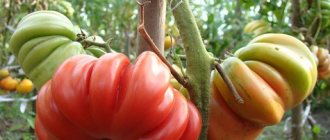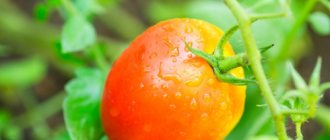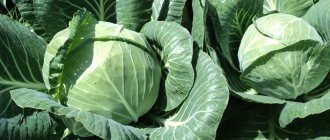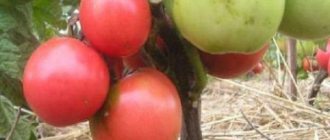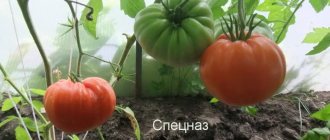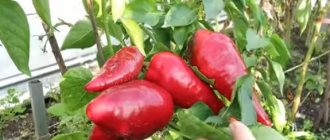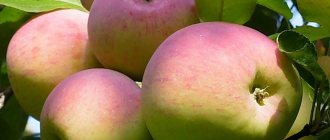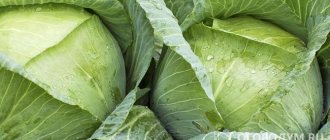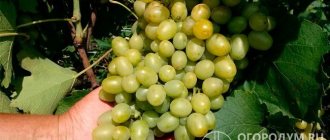Hybrid Masterpiece F1 is a real heavyweight among tomato varieties. Fruits over 1 kg are not uncommon for him. It can make gardeners who encounter it for the first time nervous: by the beginning of August, the plants are still standing unburdened with fruits, and the owner of the greenhouse begins to regret the efforts spent. It is all the more surprising to observe, already in the middle of the last summer month, a huge tomato suddenly growing on such a bush. This article is intended to familiarize those interested in the Masterpiece F1 hybrid in more detail; here is a brief description of it and the specifics of agricultural technology.
Varieties of varieties of the Masterpiece line
Masterpiece is a relatively young variety. But in just a few years of its distribution, it managed to evoke responses from thousands of gardeners. Moreover, these responses are ambiguous.
Masterpiece Early
By its name, the tomato indicates early ripeness. The variety is interesting for those who want to receive a harvest 10-20 days earlier than usual. Growing seeds through seedlings is encouraged. During development, the bush grows an average number of dark green leaves.
Masterpiece Early reaches a height of no more than 50 cm and produces medium fruits weighing 120 g, up to 6 pieces per cluster. The harvest volume from one bush per season is up to 5 kg.
In terms of application, Masterpiece Early tomatoes can be safely called universal: for salads, tomato purees, and preparations. Taste and preservation are at a high level.
Altai masterpiece
This variety is in greatest demand due to its tallness and frost resistance. Hence the following advantages:
- resistance to viruses and fungi;
- high yield - up to 10 kg per bush;
- good marketability and taste of fruits weighing up to 600 g.
The predominantly indeterminate Altai Masterpiece is grown indoors to ensure a long fruiting period. But if the tomato is planted in the southern region, you can do without greenhouses.
Hybrid Masterpiece F1
The advanced hybrid of the Masterpiece collection is designed to set records. Therefore, gardeners should definitely appreciate:
- suitability of cultivation in open and closed ground;
- average height – about 120 cm;
- resistance to diseases of nightshade crops;
- yield up to 12 kg per bush;
- the weight of one fruit is up to 1000 g.
The fruits of Masterpiece F1 ripen in 100-110 days.
Reviews
But there are practically no reviews about these tomatoes online, which indirectly indicates that they are not very popular among gardeners and gardeners. The reason probably lies in the very narrow specialization of this hybrid tomato: late fruiting combined with almost extreme large-fruitedness. And good taste, coupled with an interesting appearance, has not yet added to the culture’s popularity.
It would be more correct to classify this hybrid as a collectible: it is intended for those gardeners who like to experiment with new varieties, the formation of plants and obtaining fruits of unusual size and appearance. And yet it’s worth a try: the reward for those who decide to grow the Masterpiece F1 tomato will be a good harvest of tasty and very large tomatoes.
Characteristics of the Masterpiece tomato
The authorship of the Masterpiece variety belongs to domestic breeders. Taking into account the climate of different regions of Russia, they set themselves the task of obtaining a universal variety. And they succeeded.
The masterpiece has the following characteristics:
- cold resistance;
- resistance to common diseases - late blight, root rot;
- mid-ripening - 120 days pass from germination to the first harvest;
- high yield - 3-6 kg per bush and 6-12 kg per square meter. m respectively;
- excellent taste – meatiness, predominance of natural sugar content over acids;
- good shelf life and suitability for transportation;
- long shelf life – 3-6 months.
These indicators for gardeners vary slightly depending on agricultural technology, which is partly determined by the climate of the region.
Breeders have taken the trouble to create a whole collection to make it easier for lovers to choose the right variety of tomatoes - Masterpiece Hybrid F1, Masterpiece Early or Masterpiece Altai. The most important indicator remains unchanged - high yield.
Other signs:
- a medium-sized variety always produces many ovaries;
- fruits weigh 300-800 g;
- The indeterminate nature of the tomato makes it possible to pinch or extend the bush in order to increase the ovaries.
Ripe fruits are distinguished by their flat-round shape, large size and garnet color. When cut and eaten, it turns out that the tomato is fleshy and sweet.
In what regions can it be grown?
In open ground, “Masterpiece Early” tomatoes are grown in temperate and warm climate zones. In colder regions, this variety can be grown in greenhouses.
Productivity
The bushes give a good harvest. One cluster usually grows about 6 fruits, and an average of 5 kg of tomatoes can be harvested from one plant.
Advantages and disadvantages
Positive characteristics of the hybrid:
- Strength of stem and branches.
- High decorative qualities.
- Disease resistance.
- Late fruiting will provide the owner with fresh salads at the end of August.
Minuses:
- Inconvenient for preservation - the tomatoes are too large.
- Not very suitable for commercial cultivation (again due to its large fruit size).
Description of culture
Three related varieties of the Masterpiece tomato are known: early, Altai and hybrid variant F1, which are united by high productivity and resistance to a number of diseases characteristic of the Solanaceae family.
The tomato hybrid differs from the two varieties of the same name primarily in the very late ripening of the fruits. In fact, the harvest takes place when almost all other tomatoes have already finished bearing fruit. It is preferable to cultivate it in greenhouses, in contrast to the early variety, which successfully bears fruit in open ground.
To obtain very large fruits (weighing about 1 kg), it is necessary to form a bush into 1-2 trunks and leave no more than 2 tomatoes on it in a cluster. The fruit branches are strong and thick, they cope well with the weight of ripe tomatoes. Plants require pinching and possibly tying to supports (if necessary).
Attention! It is impossible to obtain seeds for further cultivation on your own; you need to use purchased ones.
The shape of the fruit of this tomato in the descriptions of the originator is indicated as “regular round”, but the photo shows that it is slightly flattened.
According to ripening time | By type of growth | By type of use | By growing method | Fruit weight (g) | Productivity (kg/m2) | Fetal characteristics |
| Late-ripening (115-120 days) | Determinant (85-100 cm) | Salad type | Greenhouse | 300-1300 | up to 10-12 kg | Red, round in shape with fine-grained pulp |
Features of agricultural technology
The optimal planting pattern for this tomato is 60x70 cm, because The plants are still quite tall and hung with large fruits; at a shorter distance they will be a bit cramped.
It is better to sow seedlings from March 15-20 to April 5, no more than 60 days before moving to a greenhouse, the soil temperature in which should not be lower than 12-14ºС. The hybrid is moderately demanding when it comes to watering, but the garden owner should remember that moisture is needed to form large tomatoes.
The sprouts are planted on a previously prepared (moistened and fertilized) bed. 10 days after planting, you can fertilize with ammonium sulfate and begin to form the plant.
Useful secrets
- Altai Masterpiece tomato bushes must be pinched, tied up or supported;
- When topping plants, it is necessary to leave 4-6 leaves above the topmost inflorescence;
- Many gardeners grow bushes of these tomatoes in one stem. Although the plants bear fruit quite well if they are formed into two or even three stems. To get the second stem, leave the stepson that grows under the first brush;
- On plants below the first cluster, leaves are removed to improve air exchange and greater access of sunlight to the fruits;
- To form larger fruits, gardeners tear off small or ugly flowers on the clusters.
Along with this famous variety, a real masterpiece, Barnaul agro also offered the varieties Altai Red, Altai Pink, and Altai Orange. They are similar in agricultural technology and qualities, but there are also distinctive features.
Tomato care Masterpiece F1
The Masterpiece F1 variety is generally unpretentious. Some inconveniences are associated with the need for pinching and shaping, but this is a common property for all indeterminate varieties of tomatoes.
Watering
Masterpiece F1 tolerates drought well, but we must not forget about the peculiarities of its moisturizing. Immediately after transplanting the seedlings into the ground (open or closed), water it once and then do not give it water for 2-3 weeks. Thanks to this, the roots will tend to seek moisture deep in the soil and thus grow.
In the future, watering is carried out not at the root, but in grooves located at a distance of 15-20 cm from the trunk. This also contributes to the development of the root system and an increase in the growth vigor of the bush.
With the beginning of fruit set and growth, watering should be carried out regularly at intervals of 5-7 days, while waterlogging and waterlogging should be avoided.
It is convenient to water tomatoes using drip irrigation systems.
Top dressing
To ensure decent yields, Masterpiece F1 tomatoes require regular feeding. At the same time, you should give preference to organic infusions that are easy to prepare yourself. To do this, you can use mullein, chicken droppings, or just freshly cut grass (weeds from the garden are also suitable, but nettle gives the best effect).
They are placed in a wide-necked barrel and filled with water in a 1:1 ratio, after which they are infused for 5-7 days. Then the infusion is filtered and diluted with water in proportions of 1:5 (chicken manure infusion - 1:10) and one liter is poured under each bush. Such fertilizing is carried out during the growing season at intervals of 2 weeks.
In between, it is advisable to apply potassium fertilizers (10-20 g of potassium monophosphate per 1 m2).
An excellent organic fertilizer for tomatoes can be made from ordinary grass.
Formation
When forming a bush, all stepsons that appear in the axils of the leaves are regularly removed. It is better to do this when their size does not exceed 5-7 cm. At the same time, the stepsons have not yet become coarse and are easy to pinch off with your fingers.
How to grow
The growing season for all representatives of the Masterpiece tomato is the same; the seeds are grown in seedlings:
- At the beginning of March, when daylight hours increase, planting material is prepared - store-bought soil or a mixture of peat, turf, ash (3: 4: 1).
- The seeds are disinfected in a manganese solution for 20-30 minutes, then soaked for a day in clean water at room temperature.
- The hatched seeds are planted to a depth of 1-1.5 cm, after which they are watered and the soil is compacted (the depth of the total soil layer should be at least 4 cm, the sowing area should be 30-50 seeds per 40-50 sq. cm).
- When the first shoots appear (5-7 days after planting the seeds), the seedlings are placed in a well-lit place without drafts.
- Every 5 and 20 days, seedlings are watered and fed with nitrogen-phosphorus fertilizers;
- At 50-60 days, adult bushes are planted in the ground.
From this moment on, the gardener must be guided by the growth indicators of the Masterpiece. If the bush reaches 50-60 cm, it is suitable for planting in the ground. The medium-sized Altai Masterpiece and Masterpiece F1 require the preparation of twines or trellises for garter.
It is preferable to grow these crops indoors. The remaining rules of agricultural technology remain unchanged:
- Preparing holes 20 cm deep for seedlings - add peat, humus, and ash to each hole (4:1:1).
- Planting adult plants at a distance of 50-80 cm from each other and 1.0-1.2 m between rows (when planting, watering with warm water is required, it is advisable to use the “Kornevin” solution so that the tomato quickly strengthens in a new place).
- Water every 5 days or as the soil dries out.
- Weekly loosening to ventilate the root system and weeding.
- Tying the plant when it reaches a height of 30-50 cm.
- Pinching stepsons if necessary.
- Monthly fertilizing with phosphorus-potassium or organic fertilizers.
The last feeding is carried out 2 weeks before the first harvest.
Diseases and pests
Tomatoes of the Masterpiece F1 variety are not too susceptible to diseases. The fruits ripen before the late blight epidemic, so preventive treatments are not required. Frequent loosening of the soil, removal of weeds, and mulching with straw will protect against gray, top or root rot. Plantings can be treated with phytosporin or a weak solution of potassium permanganate.
In open ground or a greenhouse, tomatoes are threatened by insect pests, from aphids and nematodes to Colorado potato beetles and mole crickets.
Frequent inspections of plantings will help detect uninvited guests. Insects are destroyed with industrial insecticides or home remedies: soapy water, a decoction of celandine or onion peels.
Tomatoes of the Masterpiece F1 variety are a real find for lovers of early tasty tomatoes. The fruits have a rich taste and can be harvested as early as June. The variety calmly tolerates minor temperature fluctuations, is not afraid of pests, and is little susceptible to disease. Several bushes will provide a stable harvest; the collected fruits can be eaten fresh or canned.
Prevention
The Masterpiece tomato is resistant to late blight and root rot. These diseases can only develop in open ground and with improper agricultural practices:
- when air and soil become waterlogged;
- when pests appear.
Spraying the leaves with a solution of non-toxic biofungicides “Fitocid”, “Trichodermin”, “Mikosan” will help prevent the attack. Treat in clear weather a week after planting the seedlings, until flowering becomes widespread. Repeated spraying is allowed 3 weeks before harvest.
For pests, it is better to use bioinsecticides that do not poison bees and animals. Type of treatment – spraying. The schedule is the same as for biofungicides.
